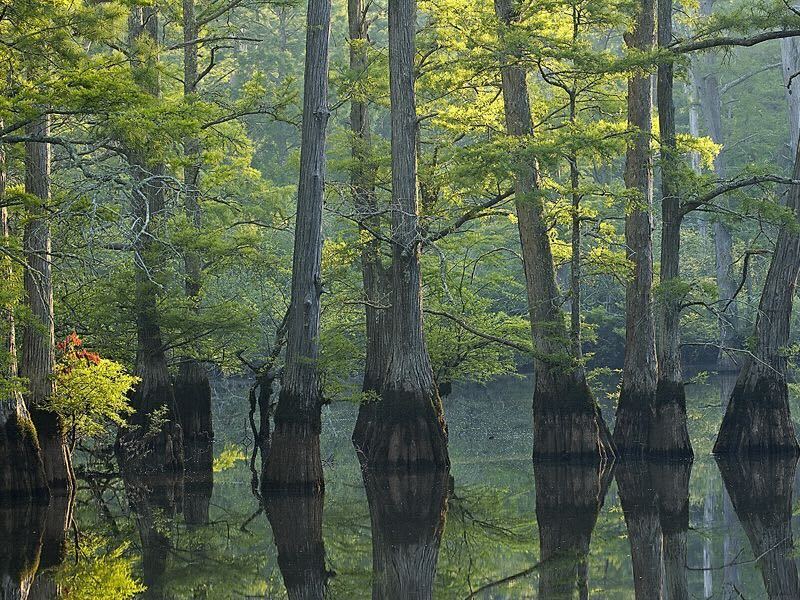
The state of Tennessee just acquired 7,400 acres of bottomland hardwood forest along the Hatchie River.
Bottomland hardwood forests are also known as “river swamps,” a type of wetland that plays a critical role in storing floodwater, improving water quality and housing biodiversity.
“The bottomland forests are so important to support some really unique habitats and species, some of them endangered and threatened,” said Laurel Creech, the Tennessee director of The Nature Conservancy, which helped support the acquisition.
Endemic species include 100 types of fish, 35 different mussels and 250 species of birds. Many of those species are unique to wetlands, Creech said.
 Courtesy Byron Jorjorian/The Nature Conservancy
Courtesy Byron Jorjorian/The Nature Conservancy Bottomland hardwood forests are also known as “river swamps,” a type of wetland that plays a critical role in storing floodwater, improving water quality and hosting various wildlife.
The Hatchie River is located in southwestern Tennessee. It is the longest free-flowing tributary of the lower Mississippi River and contains the state’s largest forested floodplain, which can help mitigate flooding and preserve water for wetland-dependent critters like river otters and wood ducks during periods of drought.
The surrounding wetlands act as an extension of the river system.
“Securing and protecting them is a powerful step toward ensuring a healthier, more resilient future for both people and nature,” said Grace Stranch, director of the Harpeth Conservancy, a nonprofit focused on protecting Tennessee’s waterways.
The new property, called “Hatchie Bottom,” is located in Haywood, Madison and Hardeman counties. It was acquired by the Tennessee Wildlife Resources Agency, The Nature Conservancy and the Conservation Fund and will stay under the protection of the state agency. Hatchie Bottom will join about 30,000 acres of nearby protected lands, including Big Hill Pond State Park, Chickasaw State Forest, John Tully State Forest and Grays Creek Wetland.
The agency plans to open up the land to the public as a “Wildlife Management Area” as soon as next year, according to spokesperson Emily Buck.
Tennessee’s wetlands are at risk from development
Wetlands have come under greater threat from development this year.
In April, Tennessee’s state legislature voted to deregulate a significant portion of the state’s wetlands. The legislation was heavily contested, sponsored by a developer and supported by a group known for fighting regulations to benefit special interests.
Wetlands cover about 7% of Tennessee land, according to the state’s recent effort to map them through a predictive model.
Most individual wetlands are small, and many do not directly connect to waterways. Recent research has shown that all wetlands, even the smallest, hold high ecological value.
Large wetlands like the Hatchie Bottom property are considered rare, especially since its river system has been relatively untouched by humans.
“We work really hard to protect the most biodiverse lands in Tennessee and beyond,” said Creech, of The Nature Conservancy. “This has been on our radar for over 30 years.”

